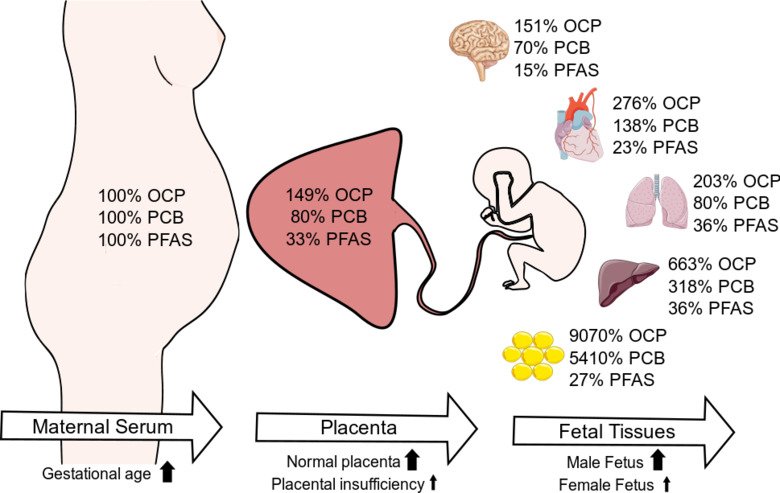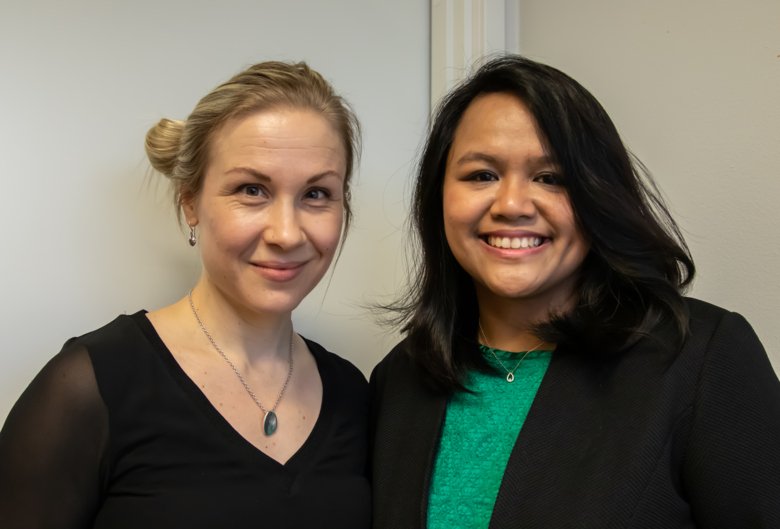Several persistent chemicals were found in fetal organs

Researchers at Karolinska Institutet found industrial chemicals in the organs of fetuses conceived decades after many countries had banned the substances. In a study published in the journal Chemosphere, the researchers urge decision makers to consider the combined impact of the mix of chemicals that accumulate in people and nature.
“These are important findings that call for regulators to consider the collective impact of exposure to multiple chemicals rather than evaluating just one chemical at a time,” says first author Richelle Duque Björvang, PhD student at the Department of Clinical Science, Intervention and Technology at Karolinska Institutet.
The researchers studied concentrations of 22 persistent organic pollutants (POPs). These are toxic chemicals that remain in the environment for long periods of time and accumulate in humans through food, drinking water and air particles. EU’s members and many other countries have signed a treaty that prohibits or restricts manufacturing and use of these chemicals.
In the study, the researchers examined samples of fetal fat tissue, liver, heart, lung and brain from 20 pregnancies that for various reasons had ended in stillbirth in the third trimester in 2015-2016. The researchers identified at least 15 of the 22 POPs in every organ. Four chemicals were found in all tissues in all fetuses. The most pervasive chemicals were:
- HCB, a pesticide previously used to protect food crops from fungi;
- DDE, a metabolite of DDT, an insect killer used in the mid-1900s;
- Variants of PCBs, chemicals formerly used in a range of electrical products.
Estimating fetal exposure
Most current methods for estimating fetal exposure to chemicals rely on maternal blood and placenta samples as proxies. The new study found that, for some of the chemicals, the concentrations in the fetal tissues exceeded those found in the maternal blood and placenta. This can be explained by the fact that these chemicals tend to accumulate in fat tissue due to their structure. However, levels in fetal liver and lung also exceeded those found in the mother. Some pesticides – PeCB, α–HCH, γ–HCH and oxychlordane – were detected in fetal tissue even when they were not quantified in maternal blood samples or the placenta. According to the researchers, these latest findings suggest that blood and placenta samples may give a misleading picture on the diversity and concentration of chemicals that babies are exposed to during early development.
This study only investigated the presence and concentration of the various chemicals but not their links to potential health risks. However, the researchers point out that several previous studies have linked early life exposure to POPs to adverse health outcomes such as low birth weight, gestational diabetes, ADHD, infertility, obesity and reduced sperm production. For example, the European Food Safety Authority (EFSA) recently revised their risk assessment of dioxins and dioxin-like PCBs, and concluded that the dietary intake in Europe is currently at a level that can disrupt fertility in men.

“Getting an accurate picture of chemical exposure in early human development is critical to assessing both short and long-term health consequences for future generations,” says last author Pauliina Damdimopoulou, researcher in the Department of Clinical Science, Intervention and Technology at Karolinska Institutet. “Therefore, we believe today’s approaches estimating fetal chemical exposure, for example in birth cohort studies, need to be updated to better reflect the likelihood that for some chemicals, fetal exposure is actually greater than what the blood and placenta samples show.”
Different types of tissue
Thirteen of the pregnancies also had data from an earlier study on PFAS (chemicals used in frying pans, food packaging and firefighting foam). By combining these data, the researchers were able to assess the proportion of chemicals in each type of tissue. While pesticides and PCBs were significantly overrepresented in fat tissue, more than half of the chemicals in the fetal lung, brain, liver and heart was due to PFAS. Overall, the highest concentration of a mix of chemicals were found in fat tissue and the lowest in the brain. The study found that the relative exposure of baby boys was higher compared to baby girls.
“Studies conducted in the 1960s and 1970s, when POPs were widely in use, found higher levels compared to ours,” Richelle Duque Björvang says. “This shows that political action leading to restrictions in the use of chemicals has an impact on population exposures, although in the case of persistent chemicals it will take multiple generations to get rid of the exposure.”
The researchers recognize that the study has some limitations, including a relatively modest sample size and that it only included fetuses who had died in the womb late in the pregnancy. Thus, it may not be fully representative of babies born alive.
The tissue samples were collected from the Stockholm Medical Biobank. The researchers have received funding from the Swedish Research Council for Sustainable Development (FORMAS), Jane & Aatos Erkko Foundation, and Women’s Department in Sundsvall Development Fund.
Facts on POPs
- Persistent organic pollutants (POPs) are toxic human-made chemicals that once released into the environment remain intact for exceptionally long periods of times and become widely distributed through air, soil and water.
- Currently, there are 30 POPs listed under the so-called Stockholm Convention on Persistent Organic Pollutants, an international environmental treaty initiated by the United Nations to eliminate or restrict the production and use of POPs. More than 150 countries have ratified the agreement.
- The list includes pesticides, industrial chemicals and by-products, many of which were long banned by countries around the world but continue to affect the environment and animal and human health.
Publication
“Mixtures of persistent organic pollutants are found in vital organs of late gestation human fetuses,” Richelle D. Björvang, Marie-Therese Vinnars, Nikos Papadogiannakis, Sebastian Gidlöf, Linn Salto Mamsen, Daniel Mucs, Hannu Kiviranta, Panu Rantakokko, Päivi Ruokojärvi, Christian H. Lindh, Claus Yding Andersen, and Pauliina Damdimopoulou, Chemosphere, online June 8, 2021, doi: 10.1016/j.chemosphere.2021.131125
